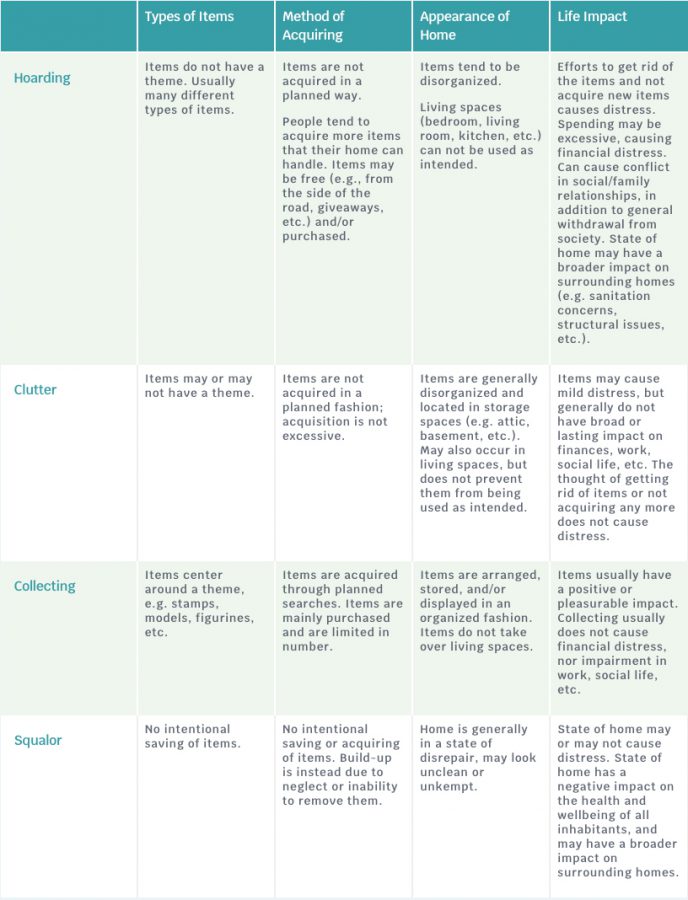Items do not have a theme. Usually many different types of items.
Items are not acquired in a planned way.
People tend to acquire more items that their home can handle. Items may be free (e.g., from the side of the road, giveaways, etc.) and/or purchased.
Items tend to be disorganized.
Living spaces (bedroom, living room, kitchen, etc.) can not be used as intended.
Efforts to get rid of the items and not acquire new items causes distress. Spending may be excessive, causing financial distress. Can cause conflict in social/family relationships, in addition to general withdrawal from society. State of home may have a broader impact on surrounding homes (e.g. sanitation concerns, structural issues, etc.).
Items may or may not have a theme.
Items are not acquired in a planned fashion; acquisition is not excessive.
Items are generally disorganized and located in storage spaces (e.g. attic, basement, etc.). May also occur in living spaces, but does not prevent them from being used as intended.
Items may cause mild distress, but generally do not have broad or lasting impact on finances, work, social life, etc. The thought of getting rid of items or not acquiring any more does not cause distress.
Items center around a theme, e.g. stamps, models, figurines, etc.
Items are acquired through planned searches. Items are mainly purchased and are limited in number.
Items are arranged, stored, and/or displayed in an organized fashion. Items do not take over living spaces.
Items usually have a positive or pleasurable impact. Collecting usually does not cause financial distress, nor impairment in work, social life, etc.
No intentional saving of items.
No intentional saving or acquiring of items. Build-up is instead due to neglect or inability to remove them.
Home is generally in a state of disrepair, may look unclean or unkempt.
State of home may or may not cause distress. State of home has a negative impact on the health and wellbeing of all inhabitants, and may have a broader impact on surrounding homes.

You’ve looked around our website, and had a look at some of our resources and tools. Now what?
Contact the WHGR coordinator to talk about how the harm reduction approach can work in your situation, and discuss possible next steps. You can call anonymously and your information is confidential.
© 2019 All rights reserved
© 2019 All rights reserved